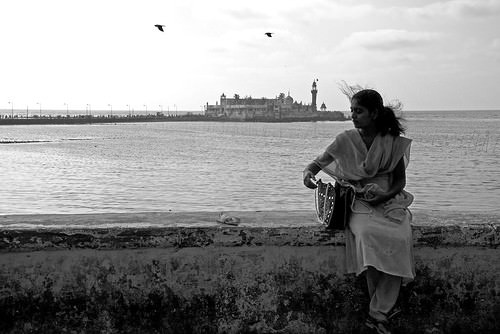Book: Why Loiter? Women and Risk on Mumbai Streets
Authors: Shilpa Phadke, Shilpa Ranade, Sameera Khan
Publisher: Penguin Books
Genre: Non Fiction
“Why Loiter? Women and Risk on Mumbai Streets” is a book that is truly powerful in its potential to generate debate, and perhaps to create a transformative change in the way we perceive public spaces in India.
Lucid and compact, the book was born out of a three year research project titled Gender and Space, undertaken by the authors Shilpa Phadke, Sameera Khan and Shilpa Ranade. Based in Mumbai, it cuts across location, class and religious affiliations. Carefully dispelling the myth of Mumbai being a safe city that grants full access to its women, it proves that even in this cosmopolitan city, the access of women to public spaces is “at best, conditional”.
Reading through this text feels like a series of epiphanies – revealing things that seem so obvious, but not until they’ve been pointed out to you. As it eloquently points out, that “when society wants to keep a woman safe, it never chooses to make public spaces safe for her”, and instead tries to limit her right to this space. It highlights the way in which the media, as well as general discourse tends to focus on the dangers that face women who “dare to cross prescribed lines”. The sensationalism exhibited by the media in reporting violence against women only serves to reinforce women’s fears about being out in public, and justifies further restrictions on her mobility, all the while normalizing her already limited access to public space. And of course, whenever there is an attack on any woman in public, the focus immediately centres on why and what she was doing there, what she was wearing, who she was with-thus putting the onus of the attack completely on her.
Through the striking observation that cities are planned and built while keeping in mind a “neutral” user who is usually an able bodied male, it shows us how anyone deviating from that standard does not have the same kind of access to the city. The book especially talks about how women need to “demonstrate a purpose” to be out in public, and how they must navigate various restrictions when they wish to access this space “just to have some fun”. For example, short skirts are acceptable in Bandra, but not in Matunga, and are acceptable in Chembur only if you are going to a nightclub in your private car.
The authors ask important questions: Who’s having fun? Can girls really have fun? Do Muslim girls have less fun? Do rich girls have more fun? How do slum girls have fun? In asking the question, “Can girls buy fun?”, the visibility of women in the symbols of globalisation, malls, is discussed. While the presence of women in these spaces may lead us to think there has been an increase in their access to public space, the book points out how these are actually controlled and sanitised spaces where access depends on class, thus making them private spaces. It talks of the class divide within these spaces of consumption, where the sales women and shoppers are dressed similarly – in skirts, jeans and make up – but this equality is just a facade, because the sales woman could never afford the dress the shopper is trying on. However, the common conclusion to all these questions is that fun never comes without conditions attached for any woman.
The section “Imagining Utopias” asserts women’s right to take risks, and suggests that loitering fundamentally “subverts the performance of gender roles”, as it is seen as unfeminine, and that it has the potential to challenge the divide between public and private space, which has long been used as to keep women in their place.
In making a case for loitering as a feminist activity, it says that “the struggle against violence and the quest for pleasure cannot be two separate things.” While the struggle against violence is premised on exclusion, in as much as it divides people into “aggressors” and “victims”, the quest for pleasure is framed in more inclusive terms and is thus non divisive – this right to loiter is not just for women, but for all marginalised groups, therefore envisaging an “undifferentiated right to public space.” Feminism has long been seen as joyless, and pleasure never been a priority, lest it be seen as frivolous. In such a context, loitering is unlikely to “find a place in a feminist list of demands”. But according to the authors, the only kind of feminism that is “likely to be exciting” in the 21st century, is a feminism of inclusion.
The book is brilliant in the way it is nuanced yet simple, serious yet light. It deals with a multifaceted theme, yet never becomes too complex for the reader. This is a book that absolutely everybody needs to read. It is one of those rare works that can at once enlighten you, entertain you, and enrage you. So, please get yourself a copy as soon as you can.
Featured Image Credit: Lecercle on Flickr | User under a CC license
About the author(s)
Women’s Studies student, foodie, and feminist, with an unhealthy addiction to rajma-chawal. She blogs at: https://bicyclewithoutafish.wordpress.com/




